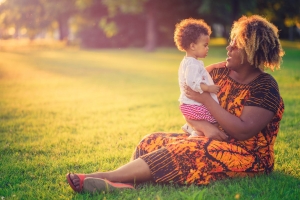Supporting Children Through Traumatic Events

At some point in our lives, many of us will experience the effects of a natural disaster or severe weather event in our community.
Following a community incident, the majority of children recover well. However, for some children, the incident doesn’t always end when the waters recede, or the land starts to look green again.
When disasters occur, we see a pattern of responses in the community including emergency responses, media stories, fundraising campaigns, services flying in, and personal stories of loss, grief and hope. What is less known is the story that continues for the communities, families, parents, and in particular, children in the months, and sometimes years that follow.
Following a community incident, the majority of children recover well. They return to their everyday lives and routines meaning that the experience of the trauma was a frightening, but short-lived experience that doesn’t have a long-term impact.
For some children however, the incident doesn’t end when the fires are extinguished, and the smoke has cleared. Family life has changed. All family members may be stressed and hurting in different ways. For parents, their own trauma may result in feelings of hopelessness, high stress, anger and sadness. Isolation, financial stress, mental health and relationship difficulties may become an accepted, and often misunderstood part of everyday life. For children, these changes become an invisible presence in their family - often without knowing the link between what happened to the family and what is happening now.
How do we support children after a disaster or through traumatic events?
Preparation – getting ready for disaster
- Include children in discussions about practical and psychological preparedness for community incidents. Being involved in preparing for the “what if” helps children to cope and feel in control
- Know the risks and how to respond to them. Adults who feel informed and prepared are better equipped to help children manage stress and anxiety during frightening times
Immediate – up to 4 weeks after a traumatic event/traumatic events
- In the days following a community incident, children need to be close to their loved ones in an environment that’s as physically and emotionally safe as possible
- Return to normal routines and activities as soon as possible, so that children can start to feel more calm and secure
- Remove children and yourself from the sights, sounds and smells of the traumatic events, including media coverage
- Listen to children’s feelings but don’t force them to speak about the incident if they aren’t ready
- Look out for behavioural and physical reactions such as being ‘frozen’, uncontrolled crying or screaming, nausea, loss of bladder and bowel control
Short term – 1 – 4 months following the disaster
- Most children recover over this time but some need more support. Keep an eye on moods and behaviours and see a family doctor to talk about extra help.
- Be patient and understanding, giving children the opportunity to talk and reassuring them that their feelings are ok. Frequent, short conversations are better than long, one-of chats.
- Give young children time to play. This helps them work through feelings of traumatic events.
- Maintain stability and routine, even though it can be tempting to let normal rules slip. Children do best when things are predictable and when boundaries don’t move.
- Parents, carers and adults need to take care of themselves to better care for children. Our children are not ok if we are not ok.
Long term – 4 or more months following the traumatic event/traumatic events
- Most children find their ‘new normal’ and new strengths but some children will need specialised support.
- The family GP can be a good place to start for seeking support – both for the parent who is supporting the child, and for the child.
- Children may face difficulties at times of anniversaries or reminders
- Regularly check in with children and encourage them to return to activities that involve community connections such as sport and music
Ongoing – a disaster or trauma that continues for months or years
- The effects of long-term events such as drought can accumulate more slowly over time and persist for longer than a one-off event like cyclone or fire
- Infants and very young children don’t have the cognitive ability to understand how the weather impacts their family. They pick up on the emotions of the adults around them and can absorb feelings of tension and anxiety.
- Emerging Minds provides specific resources to help communities manage the impact of drought on young children. Click here to access.
The Emerging Minds Community Trauma Kit provides free resources for professionals, parents and families who are supporting children after a traumatic event and is available from: https://emergingminds.com.au/resources/toolkits/community-trauma-toolkit/
This article was kindly written and contributed by Brad Morgan – Director, Emerging Minds National Workforce Centre for Child Mental Health





